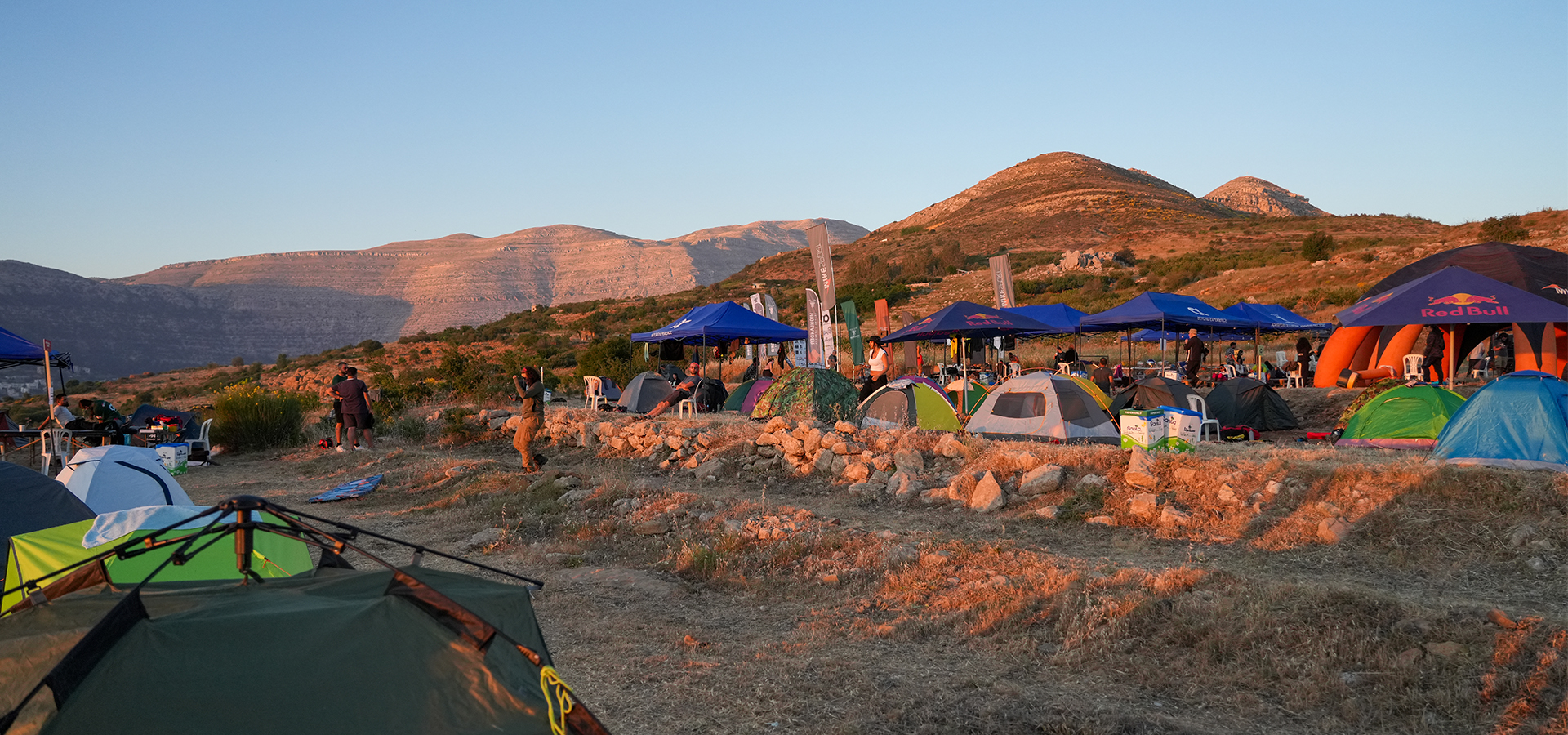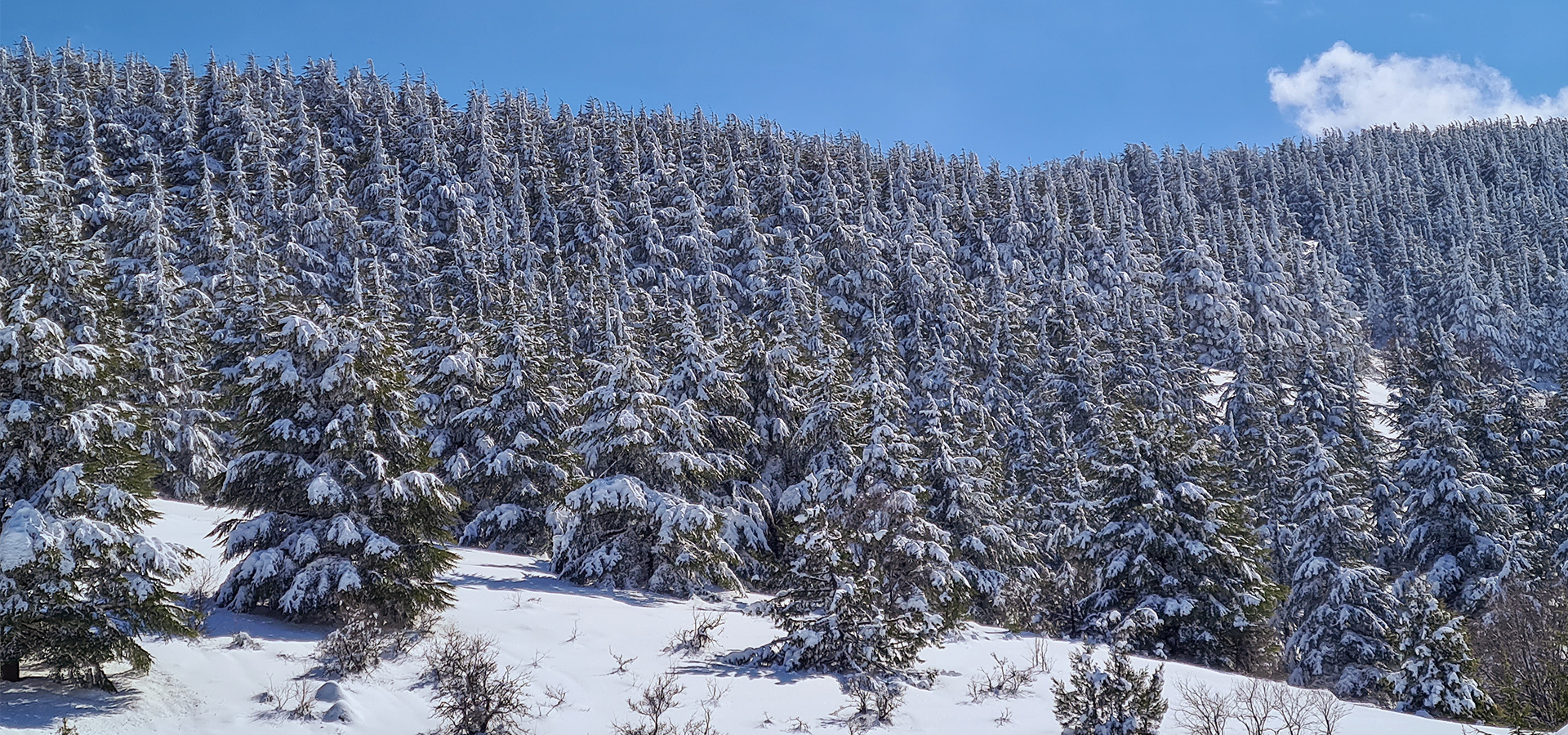
Dendrochronology
- March 3, 2022
- 0
Trees are fascinating living things, always a source of aspiration and wonder for us.
Being perennial plants, which means they do not die at the end of the vegetation season, trees, may live long while achieving important growth in length and in diameter. One of the main characteristic of trees is that they are woody plants, where wood provides them with a solid structure allowing to sustain their height and weight pressure against gravity. This structure is chemically composed of lignin, a molecule rich in carbon that is responsible for those hard tissues of the trunk and branches. The tissues are lignified through a process that starts at the end of each growing season. The cells are pushed deeper towards the center of the tree, and the new tender cells and tissues of the new growing season are always on top of the old, meaning towards the external parts of the trunk. Saying this, the oldest part of the tree is in the core of the trunk. But how do we date it or understand its age? In temperate regions, the annual growth is stopped by harsh conditions (drought or cold), so growth ceases, and the lignification process is initiated. The color of the cells and tissues turns darker in comparison to the new growth. Since this phenomenon is repeated every year, those darker areas form a kind of “annual rings” that we can see when a tree is cut (a cross section as in figures 1 and 2).
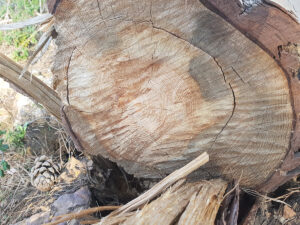
In other words, if we count the rings, from the center towards the outer part (before the bark), we can have an estimate about the tree age. However, a closer look at those annual rings, reveals that the distance (width) between two rings is not constant and varies from one year to another. A wide ring means that the growth was high, while narrow rings reflect a year facing some harsh conditions (figure 2). Luckily today we have a non-destructive method that relies on an instrument called increment borer, which foresters use to extract a cylinder of wood from the tree without harming it, and further those samples are used for analysis. We should know that a tree is like a memory stick for the environmental insights which the tree witnessed during its life, and “saved in the memory” of its annual rings. The science of studying the tree rings and their variation across time is called “dendrochronology”, “dendro” for trees, and “chronology” for time.
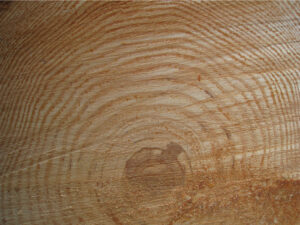
We insert the increment borer in the trunk at breast height and extract the sample, which is later processed in the lab to have a clear reading of the rings over a stereoscope. If we reach the core of the trunk, we are able to determine the age of the tree. If the tree is alive, then we can estimate what year it was born. In addition, in the lab, we are able to measure the total and annual wood increment, through the eye or with a micrometric counter with a magnifying glass. We can also extract wood samples from the rings for chemical analysis, to determine the causing agent for good or poor growth. Comparing ring width of different trees within the same forest, same species, or with different species enables studying different effects on tree growth (dendrochronology). Let’s take an example of a tree, and “read” its annual rings through an illustration (figure 3): A tree was born in 1958. The first years the growth was minimal, then increased a bit as the root system was able to catch more humidity (white circle). After the 6th year, the tree was subject to an accident, like a land slide or a rock which hit it on one side and exposed a part of the root system to the air. The growth was asymmetric for several years (green circle).
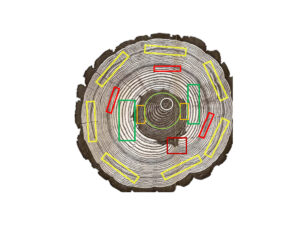
The tree is straight growing again, with neighboring trees, but the growth is limited due to competition between trees (orange blocks). A selective cutting of some trees was realized in the forest, and there was more light, water and nutrients available for our tree, the growth was greater during several years (green blocks). In 1984, a forest fire devastated the area, and the fire reached a part of the trunk of the tree, but the tree survived. A cicatrized new wood covered the annual growth (red square). Around 1993, a series of drought years affected the growth (red rectangles), and another series of narrow rings is observed starting 2001, as an insect outbreak defoliated the leaves of the tree (yellow rectangles). Few years after in 2011, the tree was cut. The main conclusion is that a bigger tree diameter does not necessarily mean the oldest. Dendrochronology was introduced to Lebanon in year 2003, with a mission from the Tree ring lab at the University of Arizona, which is the lead research hub in dendrochronology. I was honoured to be part of this mission which covered all the old forest stands in Lebanon for sample extraction, mostly from old cedar, juniper and fir trees. Samples were taken from Maasser el Chouf, Barouk, Jaj, Tannourine, Bcharreh, Ehden, Karm el Mohr, Jurd el Njass, Ras el Nahr, Qamouaa, Karm Chbat and Jbab el Homr, etc.
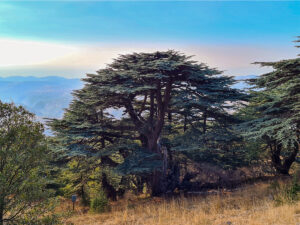
Our samples were compared with others from Syria, Jordan, Cyprus, Turkey and Greece. The research was conducted by a multinational team involving researchers from the USA, Russia, and the concerned countries. The results allowed to better understand the factors affecting tree growth in the East Mediterranean (spring precipitations and snow melt), understand the climate and atmospheric circulation of the region, and also date the trees. These results allow to better understand statistically what is the frequency of drought in the region (5 consecutive years was found to be the maximum), the increasing drought and forest fires due to climate change, the importance of mountain elevation to understand tree growth, and much more. The least important information is the age of trees. Despite the historical description of the cedars and their allusion to eternity, this immortality is only linked to our national pride. Scientific facts proved that all the existing living trees in Lebanon are far from being millennial, with the oldest witnessing the end of the crusades period. Yet, cedars of Turkey were older, with some millennial specimen. Nonetheless, to appease the deception of the readers, a dead cedar stump which is currently exhibited at the National History Museum at the American University of Beirut was dated as 8000 years old. Note that the oldest living tree in the World remains the bristlecone pines in California, roughly 5000 years old.
Prepared by; Dr Jean Stephan







